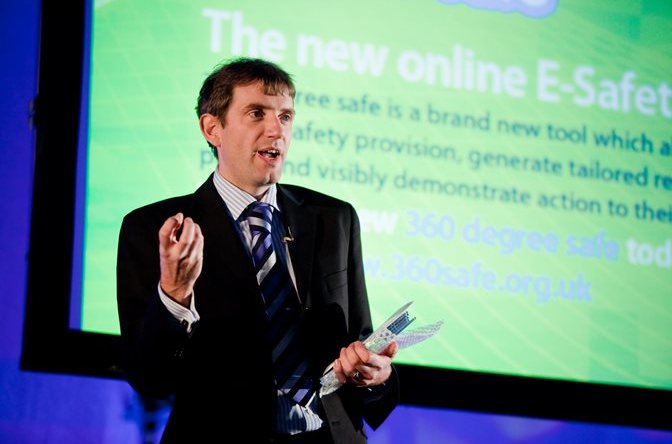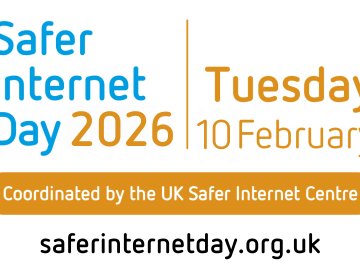As a partner in the UK Safer Internet Centre, SWGfL welcomes the Government's Internet Safety Strategy green paper, outlining how it intends to make Britain the safest place to be online. This reflects our own work and priorities.
We also welcome the support and recognition of the work of the UKSIC and its partners a referenced throughout the Internet Safety strategy.
Schools and Digital Competency
The digital competency of our children is the future foundation to ensure that the UK continues “to be the best place in the world to start and grow a digital business”. The UK will ultimately benefit from children’s “natural comfort in using the Internet in a world where digital skills are ever-more essential”.
SWGfL very much supports the prominence schools are afforded in the Green paper in their role in both providing children with formal online safety education and supporting them “when they have suffered online harms” (page 28). Schools are often at the vanguard of online safety issues and require dedicated support in discharging this critical safeguarding responsibility.
We applaud the priority that all national Governments have placed on online safety in schools over recent years and remains committed in providing specialist support in the years ahead.
As part of our work for the UK Safer Internet Centre, we have been proud to have contributed to the “detailed framework for teachers to identify the key learning that pupils should have received at various ages in order to be a good digital citizen”. Building on this publication the we are already working on “developing accompanying resources such as teacher’s activities, and an assessment criteria which will underpin the framework.”
Appstore
SWGfL very much supports raising issues with regards Appstores and specifically “where there are age requirements within the app’s terms and condition, we would also like these to be made clear to consumers.” (page 22).
The UK Safer Internet Centre raised the issue in March 2017 that age ratings can be very misleading, citing the example that the Facebook app in the Apple Appstore is rated as 4+ when according to Facebook’s own rules you have to be 13 to use the service; this is one example amongst thousands.
Something as simple as greater clarity can significantly help parents, make more informed decisions around what it suitable for their children.
Personal information Ts and Cs – Clear and simple labelling
As a society we have an insatiable appetite for ‘free’ services, with little thought as to why they are free. Personal data presents significant revenue generating opportunities for providers, however our experience suggests that most people, especially children, have little appreciation of the value of their personal data. The report ‘Growing up Digital’ (URL), published by the Children’s Commissioner in England in January 2017, eloquently makes this point.
The green paper details that “we will also encourage better communication between industry and consumers, including on guidelines and terms and conditions” (page 15).
It is for this reason that we want to see something akin to food, laundry or eco performance labelling. Something that simply describes aspects of a site’s terms and conditions and privacy statements in the same way that, for example food labelling indicates nutritional information. To supplement this, at SWGfL we propose to create the opportunity for users to rate and review terms and conditions, both sharing information and comments as well as raising further awareness of their importance.
Social Media Levy
The strategy outlines that “we will introduce a levy, to help us combat online harms” and introduces the space for a national discussion about “how this could be best implemented” (page 14). Having sustainable and well-funded online safety programmes is critical to supporting all users and ensuring trust and confidence in the online space.
The opportunities and benefits offered by technology and the internet far exceed the disadvantages. As with society we have rules and laws that govern all our lives together with Governmental funded instruments and mechanisms (eg law enforcement) to maintain law and order. The online space is no different and should have no lesser expectation. We do however recognise that many social media providers already fund online safety initiatives and projects
Helpline
Both the Helplines operated by SWGfL - the Professionals Online Safety Helpline, which we run as part of our work in the UK Safer Internet Centre, and the Revenge Porn Helpline - are referenced in the Government’s Internet Safety Strategy and form a vital function.
Whilst those working with children have an obligation to safeguard children in their care, navigating the digital aspects of their lives can be complicated and overwhelming. They should not be expected to understand how the technology works and the Professionals Online Safety Helpline offers this operational support and guidance, releasing them to focus on safeguarding.
There are countless examples and case studies where the Helpline has provided vital support to the Children’s Workforce; it is important to recognise that currently this Helpline operation (for the UK publicly funded Children’s Workforce) is supported by European Union funding.
The Revenge Porn Helpline – which provides support to victims of non-consensual image based sexual abuse - also provides a unique and clearly valuable service. Individuals supported by the RP Helpline are in desperate situations, many life threatening, and (evidenced by feedback) the support and mediation provided offers hope and light. The Helpline is funded by the Government Equalities Office (until March 2018) and received over 9,000 calls in 2 years, demonstrating a clear need for this service. Long term funding for this vital service is required.
Safer by design
Clearly providers, such as social media companies, have a responsibility to design in safety. Users, especially children, often use digital services in unexpected and ingenious ways, making safety by design a challenge. Safety features therefore often understandably lag. Cars were not designed around seat belts, but this feature was designed and adopted in response to changing demands and requirements. Having said this, providers should adopt common practices and features to increase the ease of use for their users
Aspects missing
Whilst the Green paper is comprehensive, there are aspects that we would recommend including and this will form part of our formal response
Complaints procedure
As part of the Social Media code of practice, the Green Paper asks if guidance should be issued on “Reporting mechanism for inappropriate, bullying or harmful content, with clear policies and performance metrics on take-down, including considering the manifesto commitment for content removal on a ‘comply or explain’ basis;” (page 15).
Looking at examples overseas, especially that in New Zealand, our recommendation would be for the creation of an independent mediation or arbitration service for removal of harmful content. The UK Safer Internet Centre’s Professionals Online Safety Helpline has become a world leader in collaborating with providers and through a deep understanding of their terms and conditions, excelled at taking down harmful content.
This is primarily why SWGfL was asked to create the RP Helpline for the Government Equalities Office. It has also since supported the Australian eSafety Commissioners Office in establishing their image based abuse Helpline as well as ICanHelp Line in the US. It is important that this service would be available to all Internet users, not just children and the UK Safer Internet Centre has the necessary skills, capabilities and experiences to play a significant role in this type of service
Children’s workforce capability
Those working with children are typically on the frontline of online safety, providing advice, guidance and support. It is imperative that they have the necessary skills or support in order to recognise, respond and resolve online safety issues. Whilst section 7 includes details and recommendations for those supporting children, specifically early years and schools in England, SWGfL would like to see this extended to the entire UK children’s workforce
Further Comments and observations
Online Safety / Internet Safety
It is strange that the Government’s ‘Internet Safety Strategy’, refers to ‘online safety’ throughout. It is important to ensure consistency for clarity of message.
Applies to UK
We support the objective to make the UK the “safest place in the world to be online, as well as the best place in the world to start and grow a digital business”. The Internet Safety strategy applies to the UK as a whole and whilst elements it covers are devolved, it is important that the UK, especially children, have an entitlement to benefit from the strategy.
As one of three partners in the UK Safer Internet Centre, SWGfL very much supports the national scope of the Internet Safety Strategy and everyone, especially children should benefit from the advantages and progress presented by the Green Paper. Whilst “education is a devolved issue” and section 7 (page 25) is solely concerned with England, we would very much encourage DCMS to collaborate with the Governments in Wales, Scotland and Northern Ireland to extend any and all opportunities presented by the Green Paper as all children across the UK have equal entitlement.
UKCCIS – Global model
UK Safer Internet Centre often sees recognition that UKCCIS is upheld globally as a model of best practice, with many countries looking to emulate the blueprint. Supported by WeProtect Global Alliance, it is clear that the UK already has ‘world-class’ online safety leadership and technology.






